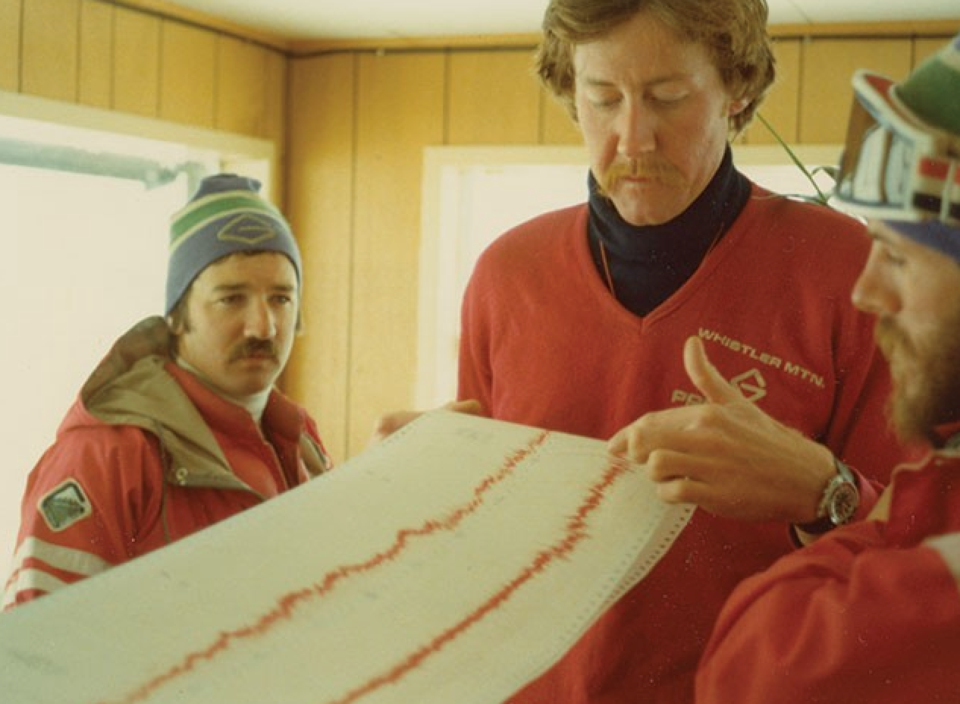It’s June, 2010, high in the Savoie region of the French Alps. The town of Val d’Isere, so busy in winter, is locked up tight. The only business that appears to be open is a convenience store serving the handful of people residing in town at this time of year.
But in the windows of all the closed cafés, boulangeries and ski shops is a poster of a ski racer, a local hero: Ingrid Jacquemod.
Ingrid raced on Whistler Mountain during the 2010 Olympics. Her best result from three Olympics—2002, 2006 and 2010—was 10th in the Whistler super G. Not spectacular; probably less than what she was hoping for. But her hometown couldn’t be prouder.
The slightly faded colours in the posters suggested they had been on display all winter. What they really revealed was Val d’Isere was not shy about celebrating one of its own; someone the town identified with, and who was part of the town’s identity.
The Val d’Isere memory resurfaced recently, at a time when Canadians are facing a ridiculous challenge to their identity and as Whistler prepares to celebrate the 50th anniversary of its founding as a resort municipality.
Who are we, as Canadians? As Whistlerites? How did Whistler get to be 50 years old and what do we have to show for it? These sorts of questions came to mind again at the March 22 Celebration of Life for Roger McCarthy.
Whistler was at the heart of Roger’s life-story and was the foundation for a career that took him all over the world. For those who didn’t know Roger, a skeletal outline of his work begins with his move from New Zealand to Whistler in 1971, age 21. At first, he ran the alpine T-bar. Then he joined the patrol, moved up the patrol ladder and held the top spot, until Hugh Smythe convinced him to join Blackcomb and Intrawest. When Intrawest bought Mont Tremblant Hugh sent Roger to Quebec to run it. Later, he oversaw all of Intrawest’s eastern ski areas, until Vail Resorts hired him to run Breckenridge in Colorado. Finally, he went to Sochi, Russia to build the Rosa Khutor ski area and prepare for the 2014 Olympics.
But Whistler was always Roger’s home, as much a part of his identity as his moustache and his charm. The photographs, the video and the stories shared at his celebration of life could form the textbook for a college course in Whistler’s history.
As Roger used to say, there are stories that should be told—bombing cornices, eating wild boar in the Russian woods with Putin loyalists—and stories that shouldn’t be told. (Details about Putin loyalists.)
Whistler should tell more stories.
In Whistler’s 50th anniversary year it’s easy to see the successes and bemoan the excesses, but it took a lot of smart people and a lot of work to bridge the last half-century. There are important stories here. As Canadians we don’t always celebrate—or even recognize—some of the things we have achieved.
An example: In the early ’90s, as Roger was leaving Whistler to take on Tremblant, he did an interview with the Whistler Question, laying out the challenges and opportunities Tremblant held. During the interview he mentioned to the reporter that Hugh Smythe was one of the smartest people in the world of ski-area management. When the reporter told me this my little colonial-Canadian mind was thinking something along the lines of: “Wow! One of the smartest people in the ski business is right here in Whistler?”
Of course, there was more than one. Roger was another. Peter Alder, Paul Mathews, Al Raine were all giants in the business, and they mentored some of the best of the next generation.
That they all came from Whistler doesn’t seem all that remarkable, from a 2025 perspective. But keep in mind in 1989, a couple of years before Roger went to Tremblant, one of the big American ski magazines was so surprised Whistler wound up second in its annual ranking of ski areas its cover read:
# 1, Vail
# 2, (You’ll never guess)
Interesting that 35 years ago an American magazine couldn’t bring itself to actually name No. 2 on its list, but anyway...
Today, a lot of people proudly identify themselves as residents of Whistler. The Whistler name is synonymous with Olympic athletes from the ski, snowboard and mountain bike worlds, and is increasingly recognized for its artists, entrepreneurs and institutions like the Squamish Lil’wat Cultural Centre and the Audain Art Museum.
Stories are about people, and there are great stories here. They should be shared—this year more than ever. It can start with a poster or a video or just people getting together to celebrate life.
As Canadians we are being challenged to show our identity, to tell our stories.
As Whistlerites, we have stories that should be told.




